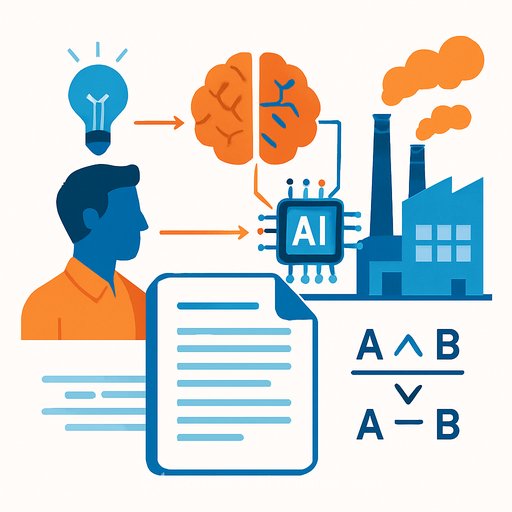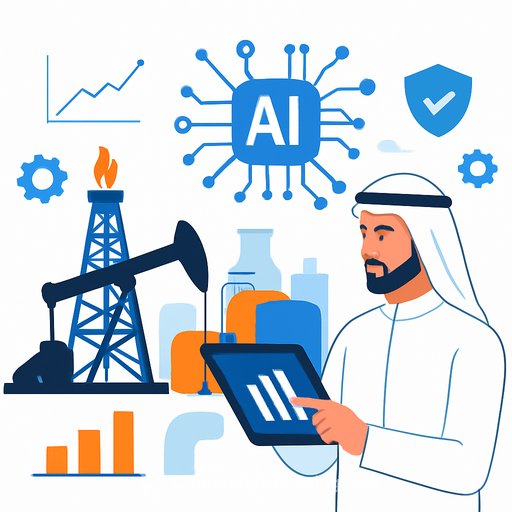Build Industrial AI on Knowledge, Not Guesses
An equipment alert fires. A maintenance engineer pulls a 25-step runbook with help from an AI co-pilot. It correctly identifies a hidden oil inlet, then immediately suggests WD-40 for lubrication because a digitized manual omits the required grease grade. That confident guess could seize a machine, trigger millions in losses, and stall the line.
This is the core issue: probabilistic output looks certain on the screen. In high-stakes operations, a system that guesses is a liability. Management needs AI that knows when it does not know-and escalates fast.
Probability vs. Actuality: Why LLMs Alone Fall Short
Large language models predict likely words, not facts. When a manual is incomplete, an LLM does not see a gap; it fills it with what sounds plausible. That creates invisible failure modes with high downside risk. For industrial use, the bar is higher: precise, traceable answers-or an explicit hand-off to a human.
The fix is strategic knowledge management that blends GenAI with deterministic, logic-based systems. The goal: ground responses in verifiable company knowledge, not open-web correlations.
Build Knowledge Management Into AI Early
Your data problem isn't volume. It's fragmentation and ambiguity. Diagrams, tables, and tribal knowledge sit across systems and formats that machines misread or miss entirely. Before autonomy, you need structure.
Make Data AI-Readable, Not Just Digitized
Convert documents into a shared ontology and knowledge graph. Every table becomes complete statements. Every diagram becomes structured text. Every part, spec, and relationship (P-101 to M-101, lubricant ISO VG 460, schedule by runtime hours) becomes unambiguous and multilingual.
This enables precision retrieval. The system can look up the exact grease for the exact component, instead of riffing on "lubricant."
Incorporate Formal Reasoning and Clear Fallbacks
With structured knowledge in place, use a deterministic reasoning engine for decisions. If data is missing, it does not guess. It flags the gap and responds: "I have identified the lubrication point, but the required grease specification for this component is not in my knowledge base. Please verify from an approved source."
This is safe, explainable, and auditable. It builds trust with frontline teams and protects assets.
Real-World Stakes: Semiconductor Fabs
Precision environments like semiconductor manufacturing allow no ambiguity. As one leader at Hitachi High-Tech America put it: "There is no room for ambiguity. Grounding AI in verifiable facts from our own engineering documents is a fundamental requirement for reliability." That standard should guide every industrial AI program.
GenAI's Role: The Interface Layer
- From unstructured to structured: An engineer uploads a grainy part photo. GenAI identifies it, links to the knowledge graph, and surfaces history and documents.
- From query to action: A tech asks, "What's the standard procedure for replacing the primary bearing on the main conveyor motor?" GenAI translates that into a formal query, then presents a precise, step-by-step workflow.
- Knowledge upkeep: GenAI assists experts in validating new procedures and updating ontology entries with human approval.
Efficiency and Edge Deployment
Reserve GenAI for the human interface. Let a lean reasoning engine handle core logic. This reduces compute costs and energy use, and makes on-equipment, edge deployment practical at scale. It also simplifies compliance and audit.
What Leadership Should Do Next
- Set a policy: No guessing in safety-critical workflows. Require explicit "unknown" responses and escalation paths.
- Fund a knowledge graph and ontology program. Prioritize high-value assets and procedures first.
- Convert key manuals, diagrams, and tables into structured statements with provenance and versioning.
- Integrate a deterministic reasoning layer before piloting GenAI copilots on the floor.
- Mandate traceability: Every answer must cite its source document and section.
- Adopt an AI risk framework for governance and auditability. See the NIST AI Risk Management Framework for guidance: nist.gov.
- Define escalation playbooks to supervisors, OEM support, or engineering SMEs when gaps appear.
- Pilot on one asset class, measure outcomes, then expand.
Metrics That Matter
- Mean Time to Repair (MTTR) and first-time fix rate
- Prevented incidents and downtime avoided
- Energy and compute per resolved task
- Data lineage coverage and percentage of answers with citations
- Technician trust score and adoption rate
- Audit pass rate for regulated procedures
The Path Forward
Knowledge-first AI turns a risky co-pilot into a reliable partner. Next time, the system doesn't guess. It states: "The required lubricant is ISO VG 460, as specified in maintenance document #7B-4 for this component." That clarity protects equipment, revenue, and people-and it scales.
See how this approach comes together in practice: GlobalLogic Enterprise AI.
If your teams need structured upskilling to support AI governance and operations by role, explore curated programs here: Complete AI Training by Job.
Your membership also unlocks:






